The engine of cars does the same works like the heart in humans, it is the source of life of all automobiles just as the heart is the source of life to all humans. we discussed "the concept of the 2-stroke and 4-stroke engines" in our previous article but we will spend some time today checking out the parts that makes up the engine and their functions.
The term 'engine' is simply a machine designed to convert one form of energy into mechanical energy.
There are various kinds of engine in the market for various purposes but this article will focus solely on the parts of the automobile engines and their functions.
The engine block :
This is a metal casting that serves as a basic structure on which other engine parts are installed. A typical block contains bores for pistons, pumps, valves and other devices to be attached to it. Engines are sometimes classified as small-block or big-block based on the distance between cylinder bores of engine block. Commonly, Engine blocks are manufactured from cast iron or aluminium alloy.
The crankshaft:

This is a device, which converts the up and down movement of the piston into rotatory motion. This shaft is presented at the bottom of an engine and the piston are attached to it by the connecting rod. Its main function is to rotate the pistons in a circular motion. Crankshaft is further connected to flywheel, main shaft of the transmission, clutch, torque converter and belt pulley.
The are produced from forged steel or machined steel.
The connecting rod :

This made of metals, which are used, for joining a rotating wheel to a reciprocating shaft.
In more simple terms, connecting rods are used for conjoining the individual pistons to the crankshaft.
The small end of connecting rod is connected to the piston through gudgeon pin while the other end known as big end and is connected to crankshaft using the "crank pin", split pin or cotter pin.
This connection helps transmit the force on the piston due to the combustion of fuel to the crankshaft which in turn drives the flywheel.
Generally, carbon steel is used as material to manufacture connecting rod but where low weight is most important factor, aluminium alloys are most suitable. Nickel alloy steel is also in use for heavy duty engine's connecting rod.
Piston
Pistons are one of the most important parts of an engine , because they are the mechanisms that contains the engines energy.
The cylinder head :

This is a solid detachable metal plate used for covering the closed end of a cylinder assembled in an automotive engine .
It comprises of combustion chamber valve train and houses the spark plugs. Cylinder heads are produced from cast iron or aluminium alloy.
The camshaft:
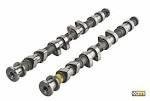
The above picture shows the camshaft with the cams arranged on it. The camshaft functions by controlling/propelling the valves in the engine.
Camshaft comprises of series of cams that regulates the opening and closing of valves in the piston engines, and it works with the help of a belt, chain and gears.
They are produced from forged steel.
The manifold:

Manifolds are simply pipes or bores for the transportation of fluid in the engine. There are two types of manifolds. Namely;
- The inlet manifold, and
- The exhaust manifold
The inlet manifold supplies the fuel/ air mixture to the cylinders.
While
The exhaust manifold collects the exhaust gases from multiple cylinders into a smaller number of pipes – often down to one pipe, and then lets it put to the surroundings.
Engine Oil System:
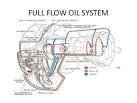
Oil is one of the necessities of an automobile engine. Oil is distributed by an oil pump, with strong pressure to all other moving parts of an engine.
The oil pump is placed at the bottom of the engine in the oil pan and is joined by a gear to either the crankshaft or the camshaft.
Close to the oil pump is an oil pressure sensor, which sends information about the status of oil to a meter gauge or a warning light.
Oil filter:
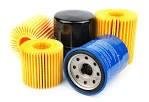
The oil filter is designed to remove contaminants from engine oil.
Governor:

The governor is a really important part of the engine, this is because it controls the speed of engine at different loads by regulating fuel supply in diesel engines, and supplying the mixture of air-petrol and controlling the speed at various load conditions in the petrol engine.
Distributor:

The distributor operates the ignition coil by making it spark at exactly the right moment. It also distributes the spark to the right cylinder according to the firing order and at the right time too. If the timing is off even by a fraction of a second, the engine won't run Properly.
Carburettor:

The carburetor carries the singular function of converting petrol into fine spray and mixes it with air in the proper ratio as per requirement of the engine.
Sump:

This surrounds the crankshaft. It contains some amount of oil, that seeps from the engine which collects in the
bottom of the sump (the oil pan).
Gasket:

Image source
This is a mechanical seal which is fitted between two or more mating surfaces, generally to prevent leakage of fluid from or into the joined objects while under compression. Gaskets can be made of various materials ranging to steel, paper, rubber etc.
Engine Belts:
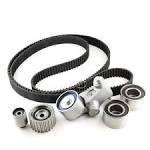
Image source
This are bands made of flexible material used for connecting or joining two pulleys on rotating shafts together. These belts work in coordination with the wheels and axles for transferring energy as in a motor.
Well there you have it; These are the major components of an automobile engine. if you liked this blogpost, kindly upvote and follow @jamesub for more quick and informative posts like this.
Thank you for reading.
Big thanks to @steemstem for letting me to use their tag, name and banner in this post. SteemSTEM is a community driven project which seeks to promote well written/informative Science Technology Engineering and Mathematics postings on Steemit. For more information on the SteemSTEM project join the steemit.chat.

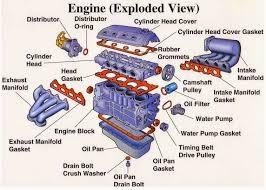
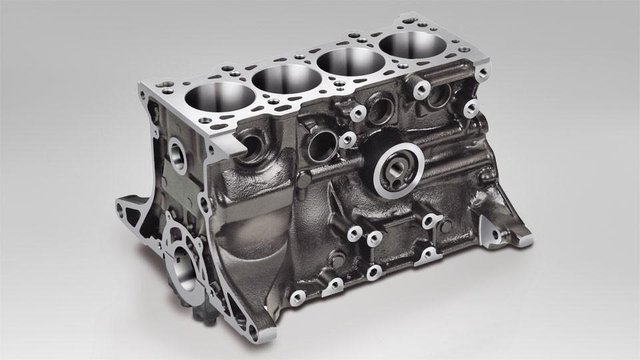
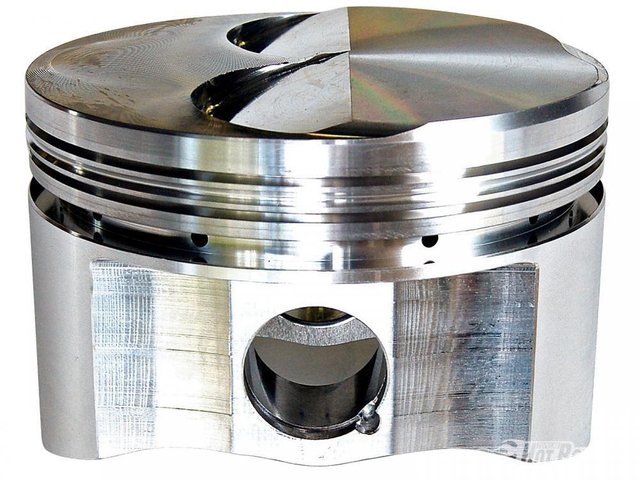
I think, I'm gonna bookmark this post for later. Very detailed. I was just wondering if you are a technician @jamesub.
Downvoting a post can decrease pending rewards and make it less visible. Common reasons:
Submit
Congratulations @jamesub! You have completed some achievement on Steemit and have been rewarded with new badge(s) :
Click on any badge to view your own Board of Honor on SteemitBoard.
For more information about SteemitBoard, click here
If you no longer want to receive notifications, reply to this comment with the word
STOPDownvoting a post can decrease pending rewards and make it less visible. Common reasons:
Submit
Thanks for the information. Was a good brief rundown of the parts of a engine.
Downvoting a post can decrease pending rewards and make it less visible. Common reasons:
Submit
You are welcome, and am glad it was of help to you
Downvoting a post can decrease pending rewards and make it less visible. Common reasons:
Submit
You got a 0.56% upvote from @upme requested by: @jamesub.
Send at least 1.5 SBD to @upme with a post link in the memo field to receive upvote next round.
To support our activity, please vote for my master @suggeelson, as a STEEM Witness
Downvoting a post can decrease pending rewards and make it less visible. Common reasons:
Submit
interesting, now I can fix my own car, hehe
Downvoting a post can decrease pending rewards and make it less visible. Common reasons:
Submit
Just loving your post everytime, think you should utopian-io community
Downvoting a post can decrease pending rewards and make it less visible. Common reasons:
Submit